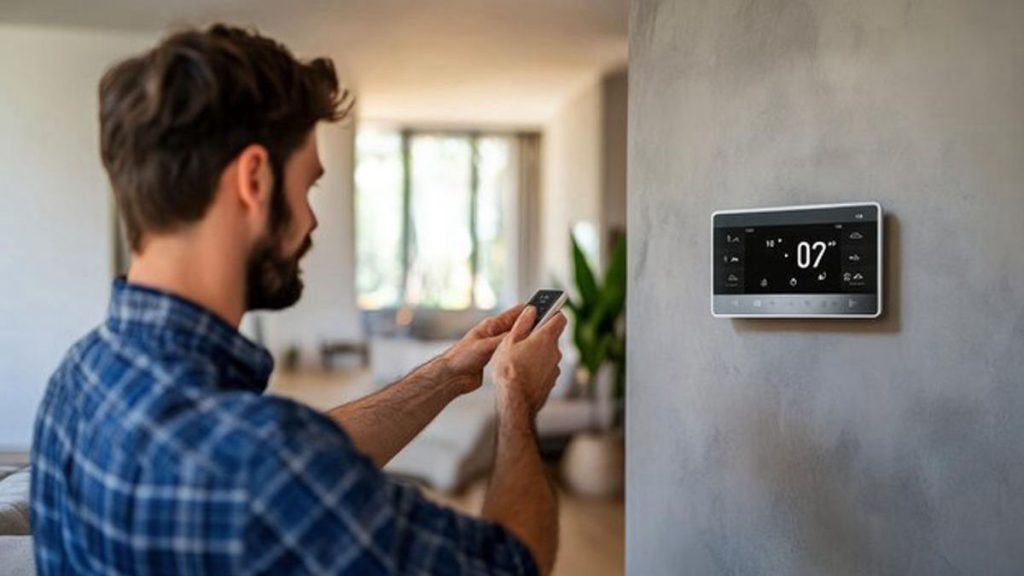Upgrading to a new air conditioning system presents a great opportunity to enhance your home’s comfort and energy efficiency by integrating a smart thermostat. These devices offer advanced control features, allowing you to manage your indoor climate with ease and precision. Whether you want to save on energy bills, enjoy remote access, or customize temperature settings to your lifestyle, pairing a smart thermostat with your new AC can transform how you experience cooling in your home. We will explore practical steps and important considerations for successfully integrating a smart thermostat alongside your new air conditioner, ensuring you get the most out of both technologies.
Key Steps to Successfully Integrate a Smart Thermostat with Your New AC Installation
- Confirm Compatibility Between Your AC System and Smart Thermostat
The first step in integrating a smart thermostat with your new air conditioning unit is to confirm that the devices are compatible. Not all thermostats work with every type of HVAC system, so it’s important to check technical specifications before purchasing. Many smart thermostats support common system types like conventional central AC units, heat pumps, or dual-fuel systems, but some may require additional adapters or specific wiring configurations. The voltage of your system, whether it’s low-voltage or line-voltage, also affects compatibility. If your new AC installation includes an air handler or furnace, compatibility with these components is equally important. When seeking air conditioning services in Oceanside, it’s beneficial to consult with professionals who can verify that your smart thermostat matches the system’s electrical and operational requirements. This step helps avoid costly issues and ensures smooth installation and operation.
- Understand the Wiring and Installation Requirements
Once compatibility is confirmed, understanding the wiring requirements is critical for a successful installation. Smart thermostats often need a common wire (C-wire) to provide continuous power, which may not be present in older systems. During your new AC installation, the technician can install or confirm the presence of this C-wire to support your smart thermostat. Additionally, wiring diagrams provided by both the AC and thermostat manufacturers should be referenced carefully. Proper connection of wires such as R (power), W (heat), Y (cooling), and G (fan) is essential for the thermostat to communicate effectively with your AC system. If you plan to install the thermostat yourself, thorough attention to wiring details and following the installation manual are important to prevent malfunctions or damage.
- Position Your Thermostat in an Optimal Location
Where you place your smart thermostat significantly affects its performance and the accuracy of temperature readings. It should be installed in a central location inside your home away from direct sunlight, drafts, or heat sources like lamps and appliances. Avoid placing it near windows or doors where outdoor temperature fluctuations can mislead the thermostat’s sensors. The height at which you install the thermostat matters too—generally, 5 feet above the floor is ideal for sensing ambient room temperature accurately. During your new AC installation, discuss thermostat placement with your technician to ensure optimal location and signal reception, especially if your smart thermostat connects wirelessly to your home’s Wi-Fi network or other smart devices.
- Connect and Configure Your Smart Thermostat
After installation, the next step is connecting your smart thermostat to your home’s Wi-Fi network and configuring its settings. This process typically involves downloading a dedicated app provided by the thermostat manufacturer, which guides you through network setup and customization. Connecting to Wi-Fi allows remote control via smartphones or tablets, enabling temperature adjustments from anywhere. You can program schedules based on your daily routine, set energy-saving modes, and even integrate voice commands if your thermostat supports virtual assistants like Alexa or Google Assistant. Many models also learn your preferences over time, adjusting settings automatically to optimize comfort and efficiency. Taking time to explore and customize these features can enhance your experience and reduce energy consumption.
- Integrate with Other Smart Home Devices
Smart thermostats can often be integrated with other smart home devices to create a seamless, automated environment. For example, pairing your thermostat with smart vents, lighting, or security systems can allow your home to adapt intelligently to your habits. Some thermostats connect with sensors placed in different rooms, allowing for more precise climate control throughout the house. Integration with weather apps enables the thermostat to adjust settings based on outdoor temperature changes. This kind of ecosystem coordination enhances convenience and can contribute to long-term energy savings. During the AC installation, it is beneficial to discuss these possibilities with your technician to ensure that your system is set up to accommodate future smart home expansions.
- Schedule Regular Maintenance and Updates
Maintaining both your new AC system and smart thermostat ensures continued efficiency and reliability. Regular cleaning of filters, inspection of ducts, and professional tune-ups keep your AC operating at peak performance. Meanwhile, smart thermostats often receive firmware updates that improve functionality, security, and compatibility with other devices. These updates usually occur automatically when the thermostat is connected to Wi-Fi, but it’s important to monitor and install any necessary updates. Staying on top of maintenance and software upgrades will prolong the life of your system and keep your smart thermostat running smoothly, ultimately protecting your investment and maintaining comfortable living conditions year-round.
Integrating a smart thermostat with your new air conditioning installation is a powerful way to enhance comfort, convenience, and energy efficiency in your home. By carefully confirming compatibility, handling wiring and installation correctly, and placing the thermostat thoughtfully, you set a strong foundation for effective climate control. Connecting your device to Wi-Fi and exploring its customization features opens the door to remote management and automation that adapts to your lifestyle. Additionally, integration with other smart home technology and regular maintenance help you maximize the benefits of this combination. Taking these steps ensures your new AC system works harmoniously with your smart thermostat to provide a comfortable and efficient environment for years to come.

